Traditionally, the most dangerous place for a strike aircraft is directly over the target. Things that need to be blown up are usually also worth protecting, and short-range SAMs and automatic AA guns are cheap enough to use in great quantity. The obvious answer is a weapon capable of attacking the target while the launching airplane stays at a distance. If short-range defenses are the only concern, probably because the area defenses have been thoroughly suppressed, then laser-guided bombs or JDAMs dropped from high altitude are a good choice. If the target is stationary, then long-range weapons like cruise missiles can do the job. But there are some cases in which neither is appropriate. For instance, a Soviet armored column if the Cold War had ever turned hot. High-altitude air defenses would have forced the attacking aircraft to fly low, so an unpowered bomb wouldn't give enough standoff. But any missile needed to be small, because the targets were numerous and each would generally need a missile to finish it off. The US built a number of missiles to fill this niche, some of which are among the most successful missiles ever created.
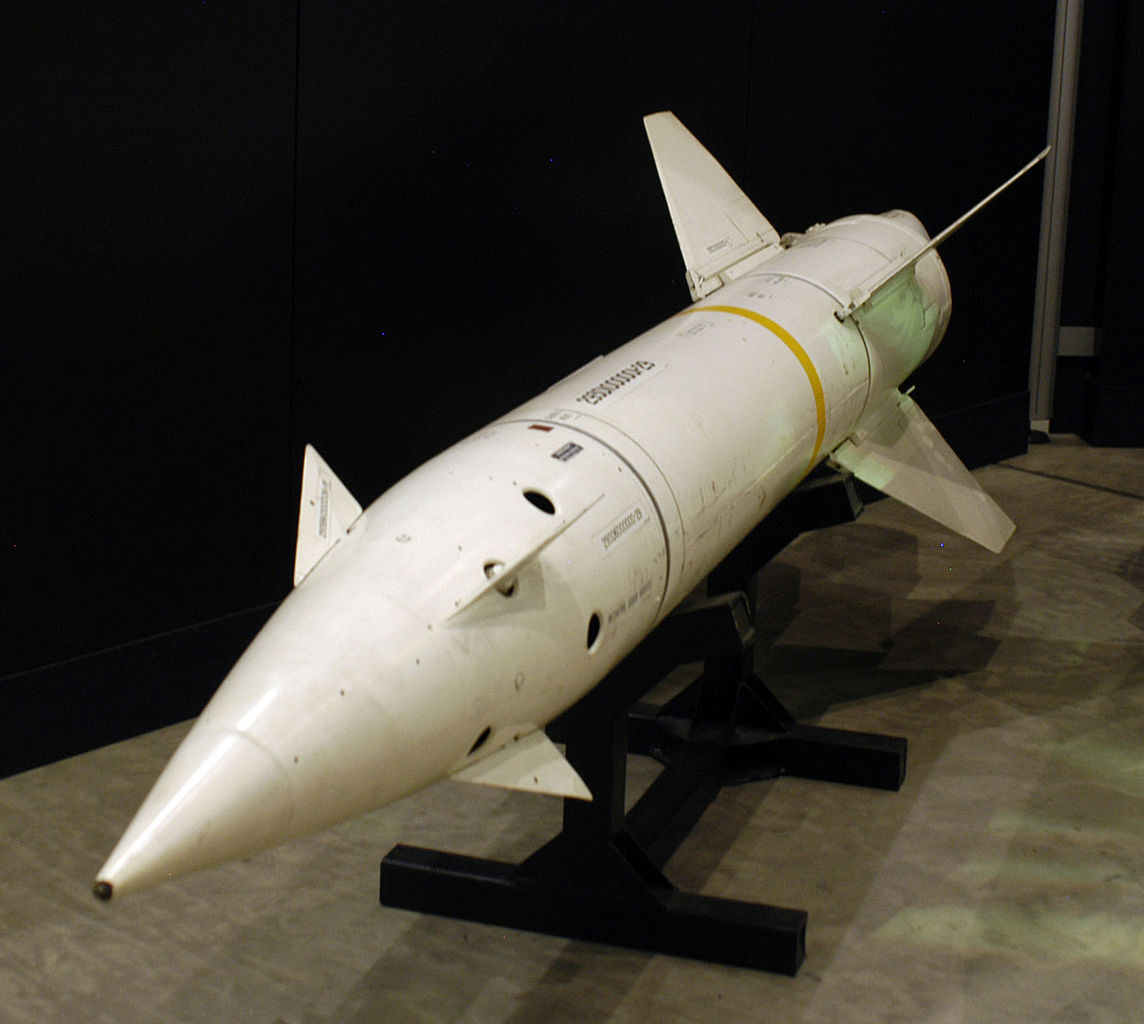
AGM-12B Bullpup
The first of the modern short-range air-to-surface missiles was the AGM-12 Bullpup, designed by the Navy in the late 1950s to let aircraft avoid point defenses, particularly when hitting point targets like bridges that were difficult to attack with dumb bombs. Bullpup used manual command guidance, with the operator looking out the canopy and attempting to steer it in with a joystick. This required the aircraft to fly in a straight line, which tended to be hazardous for the crew, and accuracy wasn't particularly good. The early versions were also limited by their 250 lb warhead, although an enlarged "variant", the AGM-12C, had a 1,000 lb warhead.1
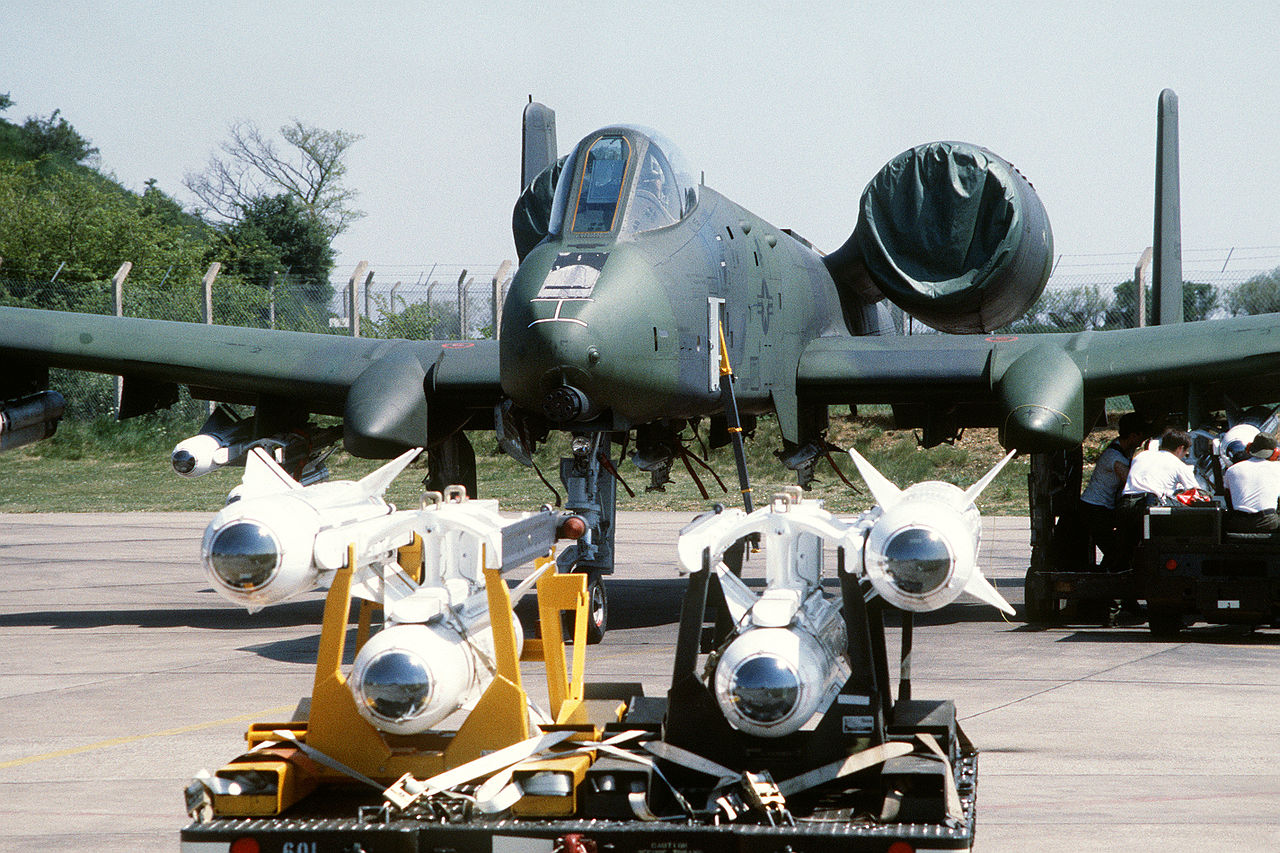
Maverick missiles about to be loaded aboard an A-10
Bullpup's inadequate performance over Vietnam led the Air Force to begin research into something better. Besides the effort to enlarge the warhead, they also looked for a fire-and-forget replacement for the original Bullpup, which was still a good weapon for use against targets which didn't merit something larger and more expensive. The result was the AGM-65A Maverick, which used a TV camera to automatically detect contrasts and home in on them. The warhead was a 125 lb shaped charge, primarily for use against tanks, and it proved a very successful weapon when it was introduced in 1972. The biggest drawback was that its range was limited by the need to lock the TV camera onto the target before launch. The B model added magnification, allowing more of the 10-mile range to be used, but both were limited to use in daylight and good weather. The obvious answer was to replace the TV camera with an imaging infrared (IIR) seeker, which produced the AGM-65D.
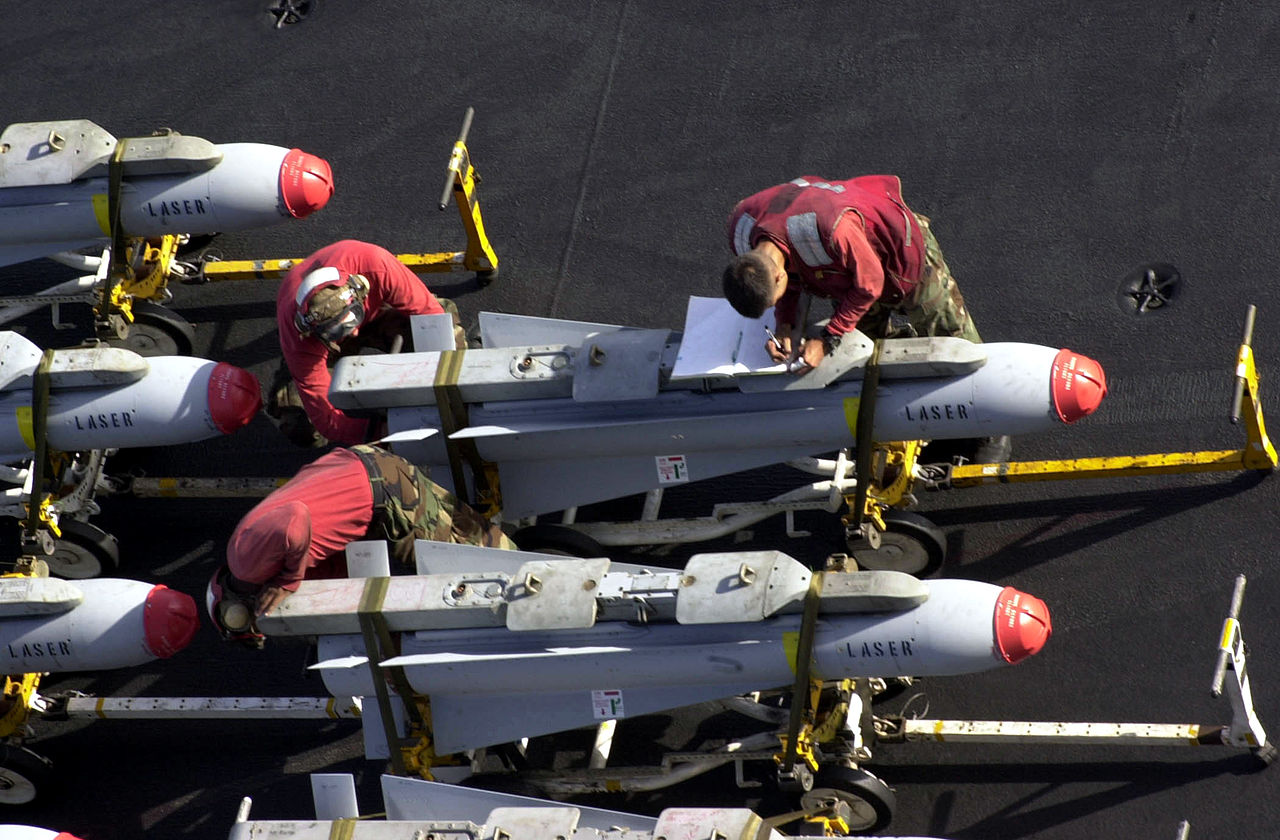
Laser-guided Mavericks being readied on the deck of USS Enterprise
The Marines also wanted the Maverick, but they weren't happy with either guidance option, and produced the AGM-65E, using a semi-active laser guidance system which they believed would be better for close air support. They also replaced the warhead with a 300 lb penetrating blast-fragment model, improving effectiveness against non-tank targets. The USN also decided to join the Maverick program, mating the AGM-65E warhead with the IIR seeker from the D, modified to give improved performance against ship targets, to produce the AGM-65F. The Air Force thought that this was a good idea, and built a similar missile, the AGM-65G, with guidance optimized for land targets instead. By this point, it was the early 90s, and during the campaign to evict Saddam's forces from Kuwait, over 5,000 missiles were fired with a hit rate above 80%. Despite this record, the IIR seeker struggled in the desert, leading to the reintroduction of TV guidance using a vastly improved CCD camera. This accounts for the H, J and K models, depending on which service and which warhead they are fitted with. Over 70,000 missiles have been produced over the last 45 years, and it has served with 40 nations around the world, making it possibly the most successful Western air-to-surface missile ever.

An AH-1 Cobra launched a TOW
The only serious competitor for that title is another weapon designed primarily to thin the horde of Soviet tanks expected to pour through Germany if the Warsaw Pact ever came west. Maverick is a light weapon by aircraft standards, at between 450 and 700 lbs depending on variant, but that's quite heavy by helicopter standards, and the warhead is overkill if tanks are the only target. The first American helicopter-launched anti-tank missile was the BGM-71 TOW,2 which entered service in 1970. The operator tracked the target using a special sight, which automatically computed course corrections for the missile and passed them along a wire trailing behind the weapon. TOW was also used by vehicle-mounted launchers on the ground and proved highly successful in that role, but its utility from helicopters was compromised by its limited range (3 km), low speed (10 seconds to reach said range) and the vulnerability of the guidance wire to being broken. A project was started almost immediately to provide the Army's attack helicopters with a better weapon.
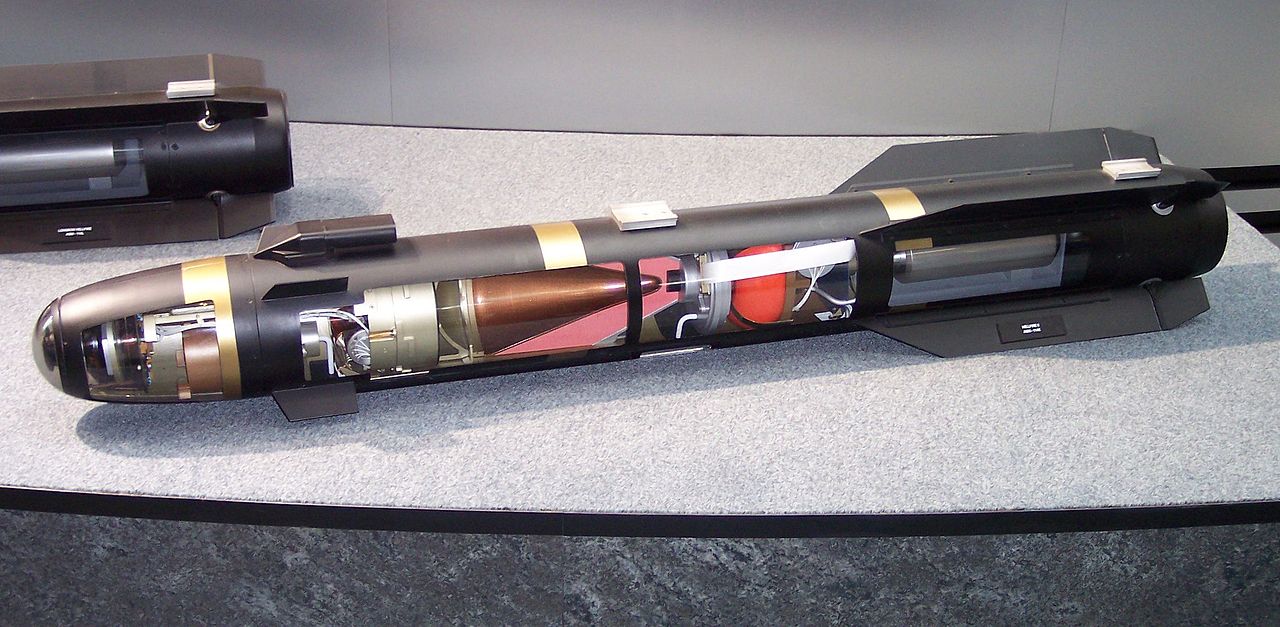
A cutaway of a Hellfire
The result was the AGM-114 Hellfire, a 100-pound weapon that married a laser seeker to a 20-pound shaped-charge warhead and a rocket motor that gave it over twice the range of TOW. An autopilot allowed it to be launched blind, which meant that a helicopter could fire a missile from behind a hill, then pop up and designate the target shortly before impact, or pass the missile off to another designator entirely. Hellfire became operational on the AH-64 Apache in the mid-80s, and quickly proved its value. An improved version, the AGM-114F,3 added a precursor charge to defeat reactive armor, but the big upgrade wouldn't come until the 90s, when combat experience in Desert Storm lead to the AGM-114K Hellfire II. This was a complete overhaul, with a selectable attack profile (top/side) and a better autopilot and seeker, which could cope with bad weather or dust scattering the laser, as well as an improved rocket motor and a warhead with improved fragmentation for non-tank targets.
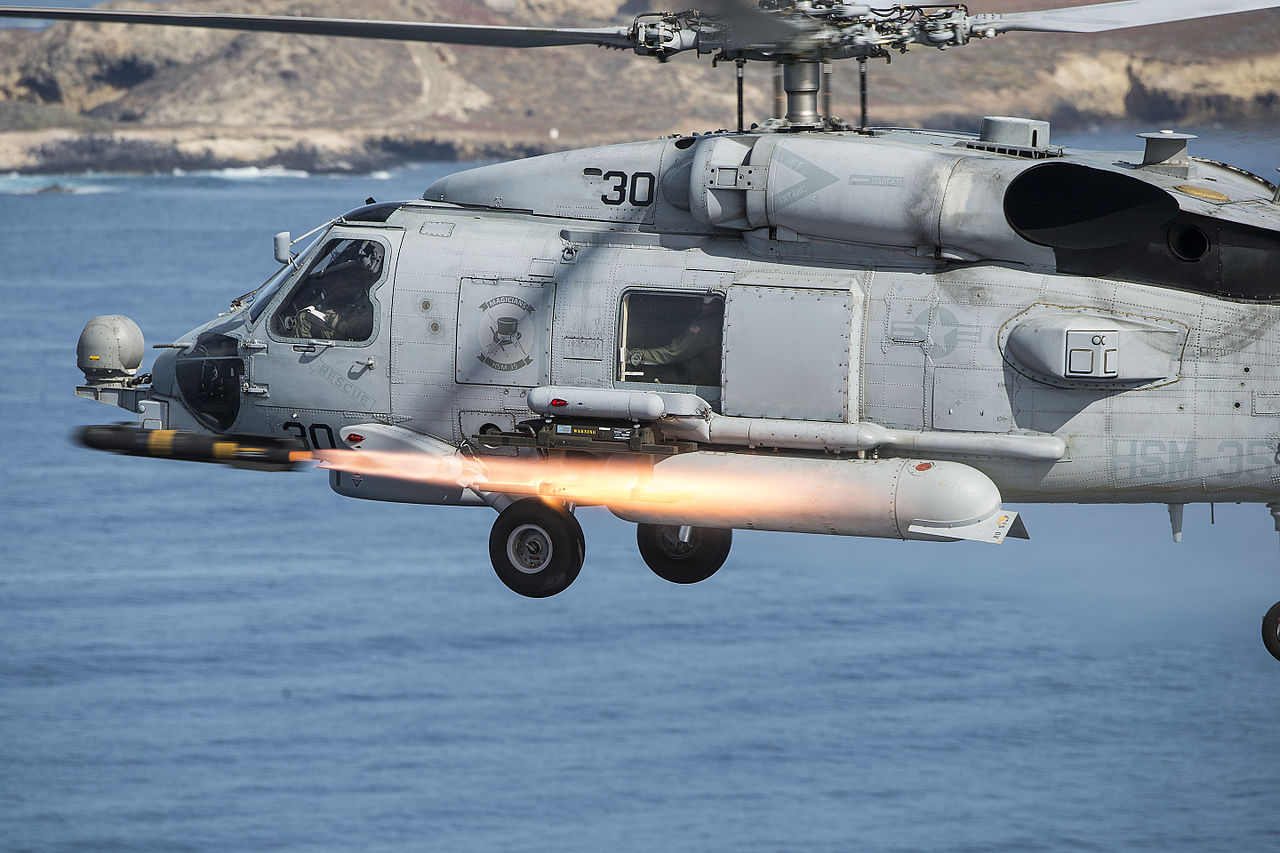
An MH-60R fires an AGM-114M Hellfire
All of the Hellfires up to this point had been fairly straightforward laser-guided anti-tank missiles, but that changed in the late 90s, as the AGM-114K was used as the basis for a wide variety of weapons. The first was the Army's AGM-114L Longbow Hellfire, which replaced the laser guidance with a fire-and-forget millimeter-wave radar seeker, designed to work with the new AH-64E Apache Longbow helicopter. The AGM-114M kept the laser guidance, mated to a 27-lb SAP blast-fragmentation/incendiary warhead. It was developed by the Navy, and is designed primarily to destroy missile boats and other small craft, but also works well against other targets. The AGM-114N is another warhead variant, using a small explosive charge to disperse an aluminum powder which then burns with atmospheric oxygen, producing extreme temperatures and pressures. During this period, Hellfire became the weapon of choice for the drone strike campaign, taking a considerable toll on terrorist leadership. However, the existing missiles were designed for low-altitude launch, and a modified version, the AGM-114P, was developed with the seeker and guidance modified for UAV use from high altitude. Confusingly, the P model can use the warhead from the K, M or N Hellfire, depending on subvariant.
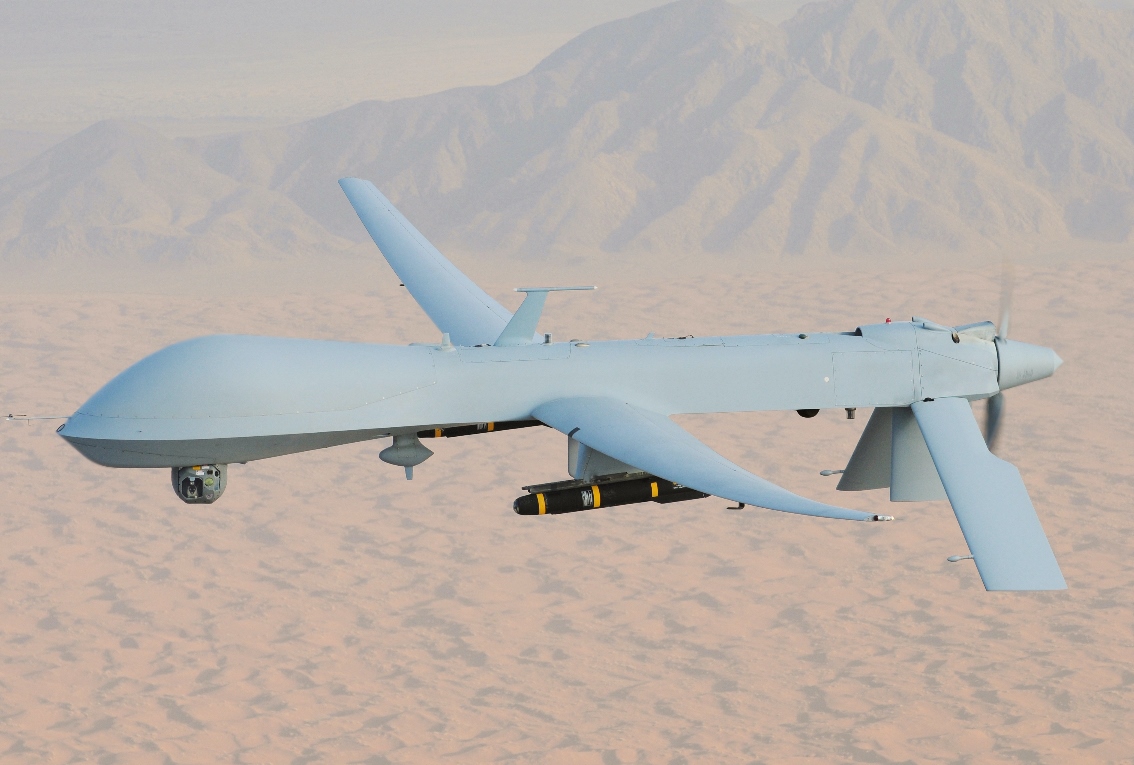
An MQ-1 Predator armed with Hellfire missiles
In an attempt to unify the Hellfire family, the latest version, the AGM-114R, makes use of the latest in multi-mode warheads, combining the shaped charge of the K, the blast-fragment capability of the M and possibly the thermobaric warhead of the N, although details are obviously still classified. This gives tremendous versatility, allowing a helicopter to switch from attacking tanks to ground troops to buildings with the same missile loadout. The last version is the so-called Hellfire 9X, which doesn't have a conventional warhead at all. Instead, it deploys six blades shortly before impact, shredding the target (probably a bad guy in a car) with minimal collateral damage. Hellfire has also seen use from surface platforms, often in anti-ship roles.
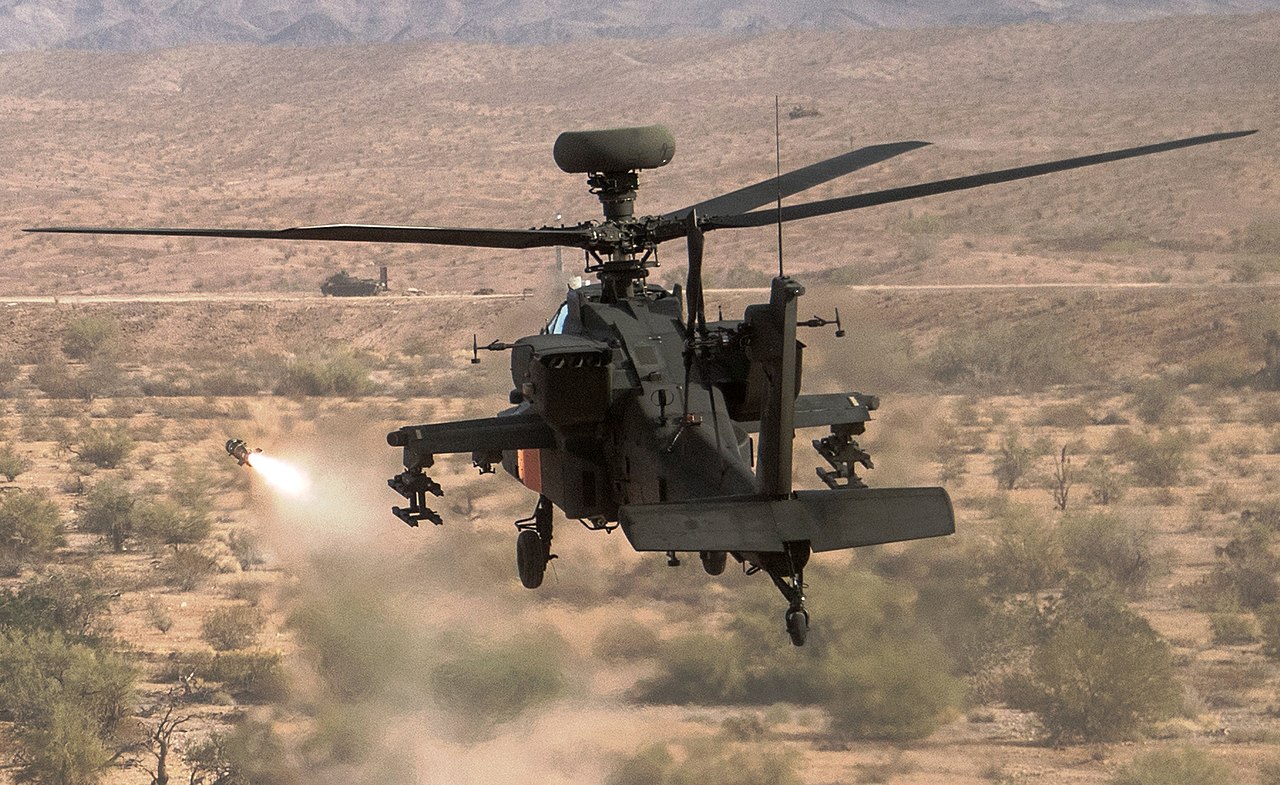
A JAGM is test-fired from an AH-64 Apache
Despite their differences, Maverick and Hellfire occupy similar tactical niches, and recent developments in technology, most notably the warhead used for the AGM-114R, have offered the possibility of combining them into a single weapon. The first attempt to do so, the AGM-169 Joint Common Missile, was cancelled due to cost and schedule overruns, but the second attempt, the AGM-179 Joint Air-to-Ground Missile, has proven more successful. It mates the warhead and booster of the AGM-114R with a new dual-mode guidance seeker, which combines laser homing and millimeter-wave radar to allow targets to be attacked at night and in all weather. Testing of the JAGM is still ongoing, but this is potentially a very powerful and exciting missile.4
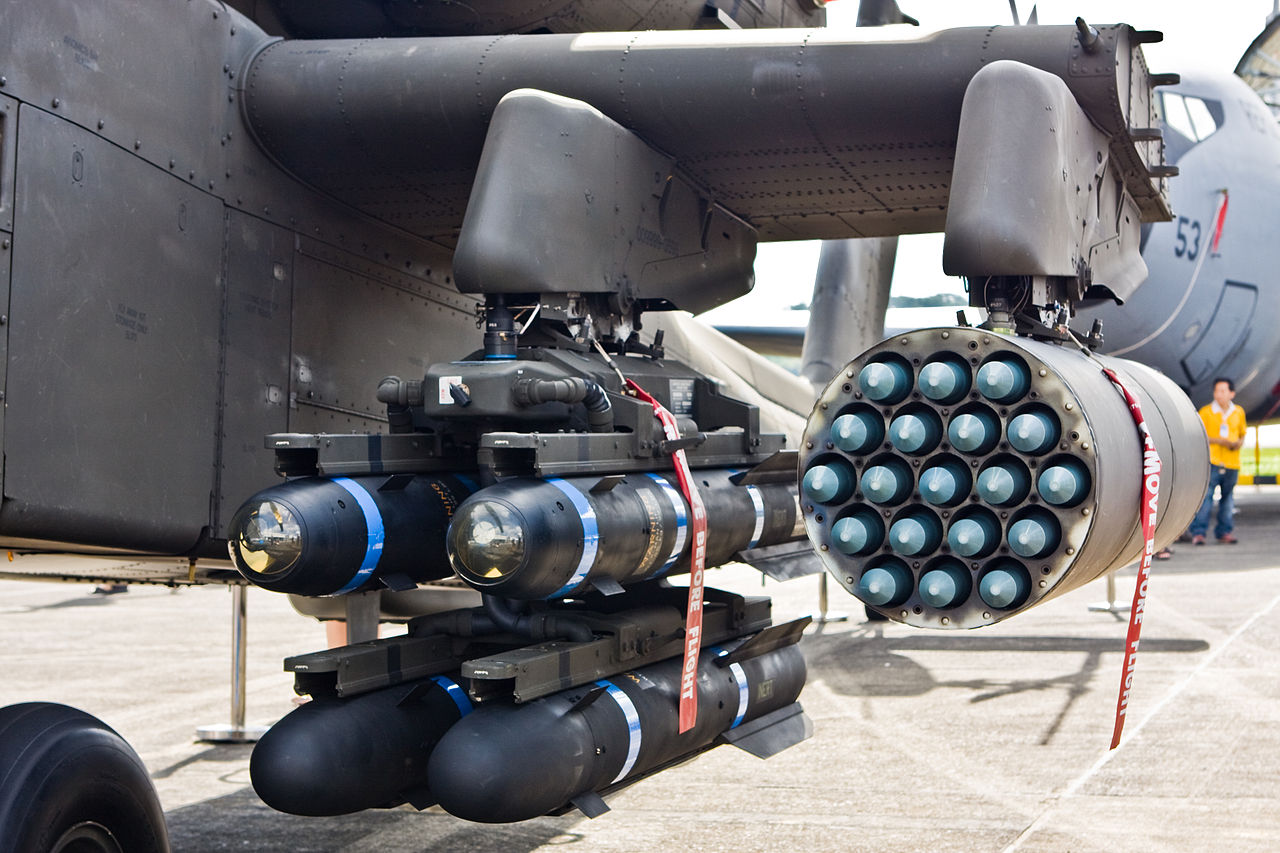
Four Hellfires and a 19-round Hydra 70 pod on an Apache
While Maverick and Hellfire may be the most prominent and widely-used short-range missiles, they aren't the only ones currently in the US arsenal. The AGM-176 Griffin is about half the size of Hellfire, and uses laser guidance to deliver a 13 lb blast-fragmentation warhead to the target. It was primarily designed for UAV use, although it has also been deployed by various C-130 gunship conversions and aboard the USN's Cyclone class patrol craft. More exciting is the Advanced Precision Kill Weapon System (APKWS), which consists of a laser guidance system that can be fitted to a standard 70mm "Hydra 70" rocket. APKWS uses what is known as a distributed aperture, where there is a small laser seeker on the front of each guidance fin, so the guidance section can be fitted between the standard Hydra warhead and motor. The Hydra is normally carried in 19-rocket pods, so a typical helicopter could carry almost 80 precision-guided missiles, fitted with any of the numerous warheads available for the Hydra family.
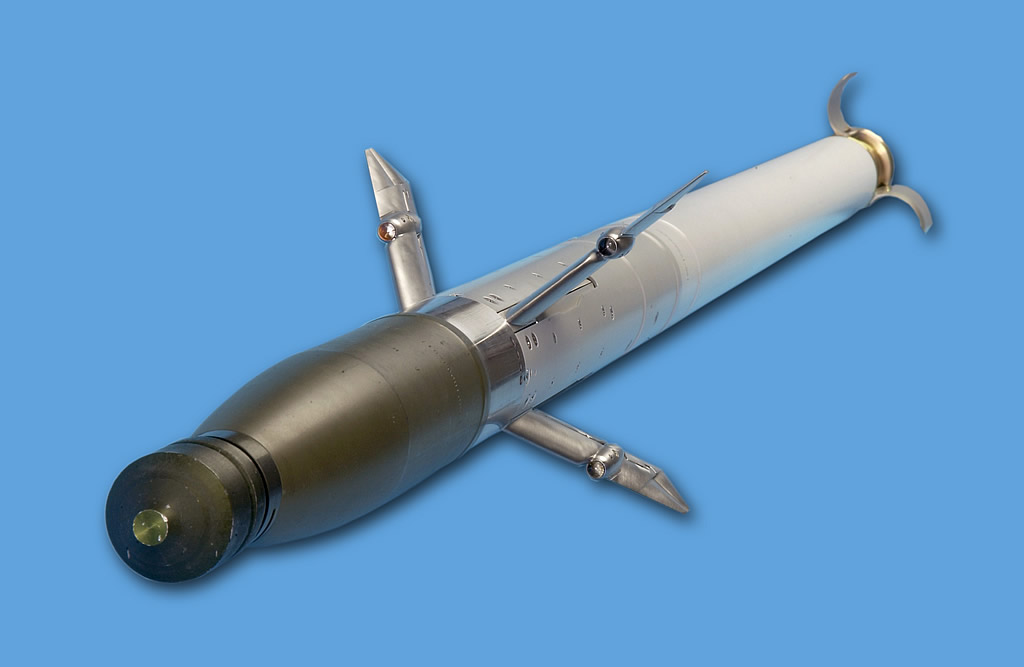
APKWS
Short-range air-to-surface missiles are versatile and useful for many missions, and as such are likely to remain one of the leading categories of guided weapons for quite a while. From old standbys like Maverick and Hellfire to exciting new developments like APKWS, they provide aircraft the ability to strike precise targets without having to get too close to the target. But sometimes the defenses are too heavy even for these weapons, and something is needed to knock them down. We'll examine the weapons designed to do that job next time.
1 This really should have been designated as a different missile, and I suspect it wasn't because it was easier to sell it to Congress as an upgrade. ⇑
2 Tube-launched Optically-tracked Wire-guided. ⇑
3 The Hellfire family as a whole has been quite liberal with the variant numbers, but most are minor tweaks to the electronics, usually doubled because Navy/Marine missiles have shipboard safety features that Army missiles don't. ⇑
4 JAGM is very similar to the British Brimstone 2, which began life as a millimeter-wave Hellfire unrelated to Longbow, and ended up as a completely different weapon that just looks the same from the outside. ⇑

Comments
I'm guessing you need to rail launch the JAGM, so they won't be practical for use from a stealthy Lighting II (along with most of the rest of the weapons mentioned. Are small diameter bombs fine for jets (since the aircraft will be moving faster and flying higher than helicopters) or is there now a requirement for an ejectable version of the JAGM, or some kind of stealth pod for APKWS?
I wouldn't be surprised if JAGM is designed for bay launch, too. Yeah, it's to some extent an SDB competitor, but the British have had Brimstone on their fast jets for years. Stealth pod for APKWS is going to be harder.
Is it also a candidate for replacing TOW on ground vehicles? Slap a first stage on it instead of ground launched SDB?
There do seem to be a lot of different similar missiles that are presumably not perfect substitutes, but I really don't get why the British want Brimstone, Sea Venom and Spear 3 (and Spike N-LoS), or what the advantages of Martlet over APKWS are. I assume the US do this too, though they probably can afford to more easily. At my more cynical, I wonder if the point is to provide jobs rather than a new capability.
JAGM, like the Hellfire, is too large and heavy to replace the TOW for use in ground vehicles. I assume they will eventually be available for the proposed IM-SHORAD vehicle though.
@Alexander
It certainly wouldn't be the first time the British government did something like that. Sea Venom is 2.4 times the weight of Brimstone, which can make a big difference in performance. Spear 3 is somewhat heavier than Brimstone, and it has a lot more range, to the point that I wouldn't have included it in this post, even if I was covering British weaponry. Not sure about Martlet vs APKWS.
It's also not in the SDB category. SDB has a lot better flight characteristics and a bigger warhead. You'd need an awfully big first stage to give it comparable range.